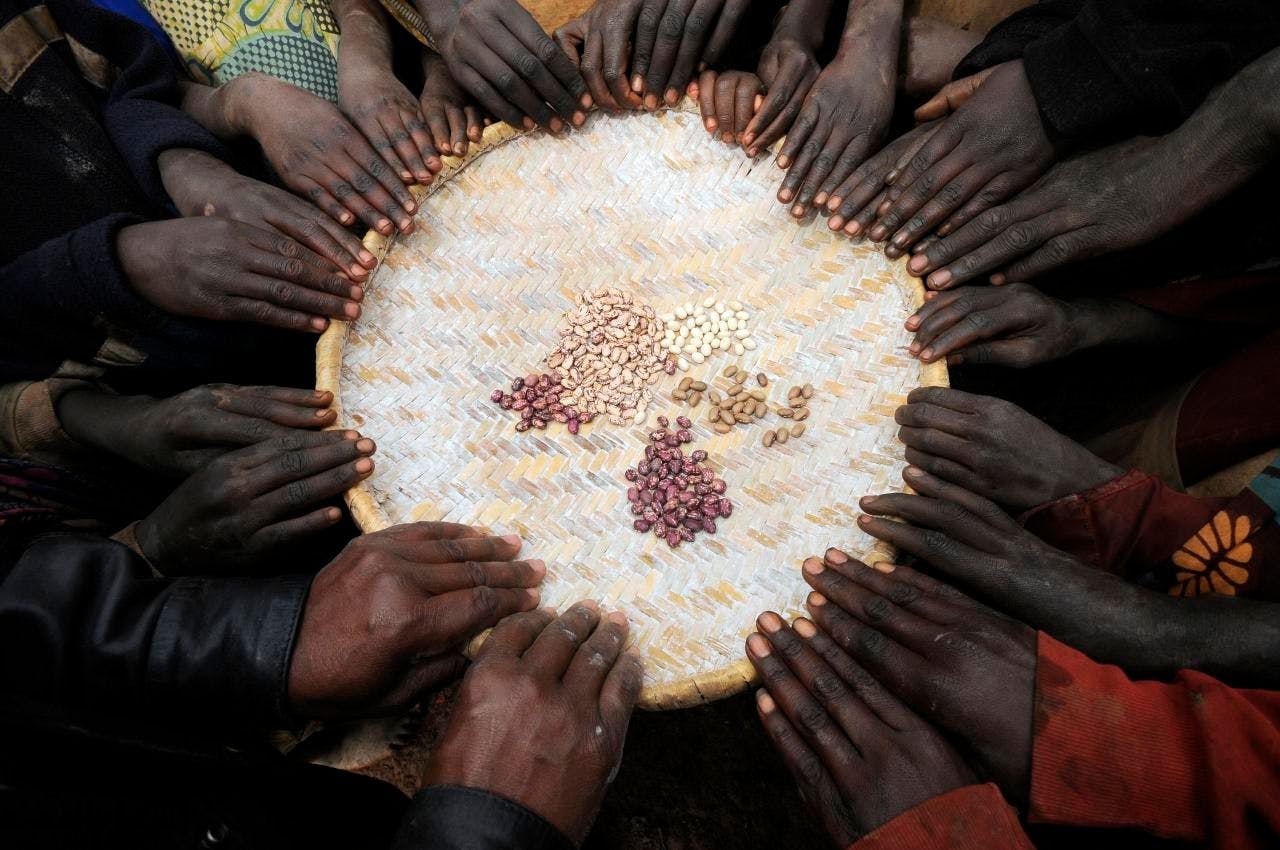Synopsis
The Adaptation Atlas geospatial data and analytics engine supported the projection of climate risks and adaptation benefits for CGIAR’s 2022-2030 portfolio, as well as the prioritization process of three initiatives.
Use Case: Climate data and adaptation analytics that inform projecting the benefits of adaptation research
Stakeholder Group: Research
Impact: Inform strategy
KPIs: 1 (out of 5) long-term strategic action area goals informed, 7 (out of 34 in the whole portfolio of initiatives) initiatives priorities informed, US$ 175M investment informed
Location: Global

Image credit: ©2011CIAT/NeilPalmer
Evidence-based priority setting
The CGIAR embarked in a process of developing a unified framework for governance and research in 2021. The OneCGIAR (as the unified framework is termed) brought new approaches — and a doubling of investment — with the goal of raising ambition toward achieving the Sustainable Development Goals by 2030. A more integrated and impactful CGIAR included a fresh portfolio of Initiatives to deliver a new 10-year strategy. One of five CGIAR’s impact areas is Climate Adaptation & Mitigation.
The Adaptation Atlas data and modeling methods played an important role in two CGIAR processes. First and foremost, the Adaptation Atlas was instrumental in providing estimations of projected beneficiaries by 2030 from CGIAR’s climate adaptation innovations (Ramirez-Villegas et al., 2021). These estimations were derived from an analysis of rural population exposure to climate hazards in Low- and Middle-Income Countries (LMICs) as well as an analysis (akin to the one in our What’s at Risk? notebook) as well as an analysis of the productivity benefits of agronomic management options (as in our On-farm Solutions for Today notebook). These estimations provided a clear target for CGIAR to set its ambition in terms of climate adaptation goals.
The second use of Adaptation Atlas data was to inform design decisions for seven CGIAR initiatives (out of a portfolio of 34). These design decisions were primarily about prioritizing countries and/or farming systems in which initiatives should work. The seven initiatives informed amount to a total of 175M in CGIAR funding, as follows,
- The climate and geographic priorities of the five Regional Integrated Initiatives were informed through an analysis of climate hazard exposure, as well as a rapid analysis of crop yield projections under future climates (see Jarvis et al., 2021).
- The Livestock & Climate initiative’s country and action priorities were informed through an extended (global) version of the Prioritizing Livestock Investments notebook. A key output of this analysis is a publication in the journal Nature Sustainability (Bonilla-Cedrez et al., 2023).
- An analysis of crop performance and socioeconomic conditions at the farming system (see Ghosh et al., 2021) level helped inform the priorities of the Excellence in Agronomy initiative.
The existing data and analytics, as well as the responsiveness of the Adaptation Atlas Team to extend Atlas’ analyses beyond Sub-Saharan Africa, quickly package insights, and iteratively engage in the design processes of the CGIAR portfolio during 2021 was crucial in successfully leveraging the Atlas for decision-making.
Partners
CGIAR; Alliance of Bioversity-CIAT; IFPRI; IITA